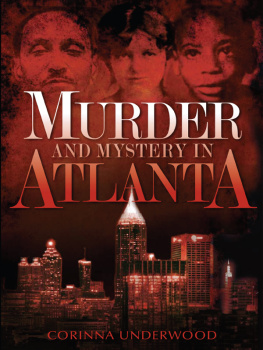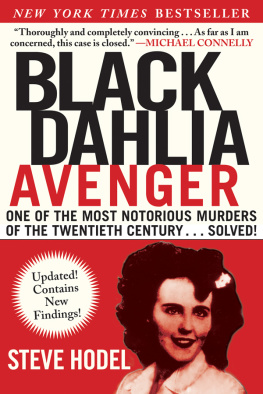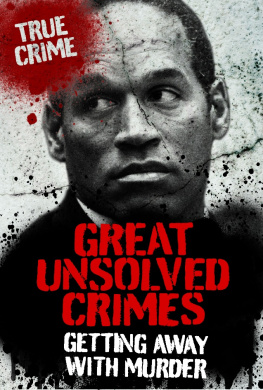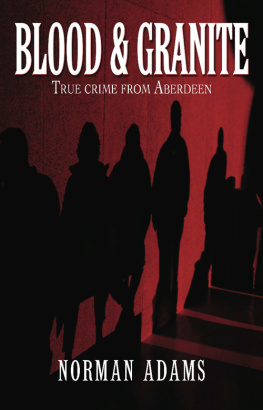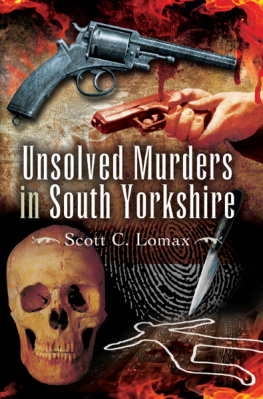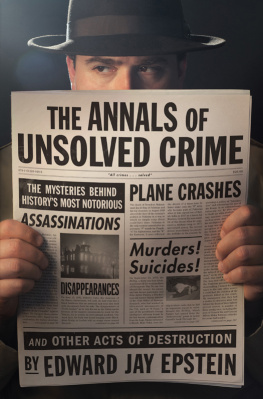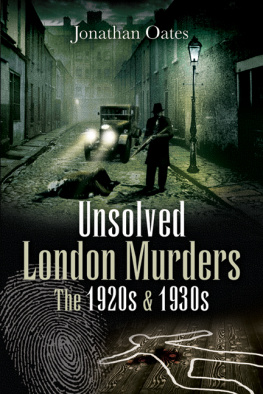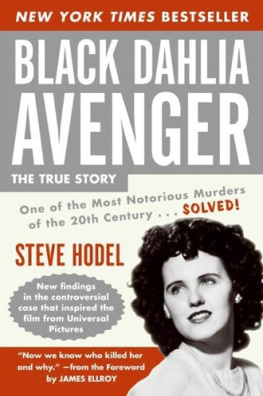The Mammoth Book of
UNSOLVED
CRIMES
Also available
The Mammoth Book of 20th Century Science Fiction
The Mammoth Book of Awesome Comic Fantasy
The Mammoth Book of Best New Erotica 3
The Mammoth Book of Best New Horror 14
The Mammoth Book of Best New Science Fiction 16
The Mammoth Book of British Kings & Queens
The Mammoth Book of Celtic Myths and Legends
The Mammoth Book of Fighter Pilots
The Mammoth Book of Future Cops
The Mammoth Book of Great Detective Stories
The Mammoth Book of Great Inventions
The Mammoth Book of Hearts of Oak
The Mammoth Book of Heroes
The Mammoth Book of Historical Whodunnits
The Mammoth Book of How It Happened
The Mammoth Book of How It Happened: America
The Mammoth Book of How It Happened: Ancient Egypt
The Mammoth Book of How It Happened: Ancient Rome
The Mammoth Book of How It Happened: Battles
The Mammoth Book of How It Happened: In Britain
The Mammoth Book of How It Happened: Everest
The Mammoth Book of How It Happened: Naval Battles
The Mammoth Book of How It Happened: WWI
The Mammoth Book of How It Happened: World War II
The Mammoth Book of International Erotica
The Mammoth Book of Jack the Ripper
The Mammoth Book of Maneaters
The Mammoth Book of Mountain Disasters
The Mammoth Book of Native Americans
The Mammoth Book of New Terror
The Mammoth Book of Private Eye Stories
The Mammoth Book of Prophecies
The Mammoth Book of Pulp Action
The Mammoth Book of Roaring Twenties Whodunnits
The Mammoth Book of Roman Whodunnits
The Mammoth Book of SAS & Elite Forces
The Mammoth Book of Science Fiction Century Volume 1
The Mammoth Book of Seriously Comic Fantasy
The Mammoth Book of Sex, Drugs & Rock n Roll
The Mammoth Book of Sorcerers Tales
The Mammoth Book of Space Exploration and Disasters
The Mammoth Book of Special Forces
The Mammoth Book of Storms & Sea Disasters
The Mammoth Book of Short Erotic Novels
The Mammoth Book of Sword and Honour
The Mammoth Book of The Edge
The Mammoth Book of Travel in Dangerous Places
The Mammoth Book of True War Stories
The Mammoth Book of UFOs
The Mammoth Book of Vampires
The Mammoth Book of War Correspondents
The Mammoth Book of Women Who Kill
The Mammoth Encyclopedia of Extraterrestrial Encounters
The Mammoth Encyclopedia of Modern Crime Fiction
The Mammoth Encyclopedia of Unsolved Mysteries

Constable & Robinson Ltd
3 The Lanchesters
162 Fulham Palace Road
London W6 9ER
www.constablerobinson.com
First published in the UK by Robinson,
an imprint of Constable & Robinson Ltd, 1999
This revised edition published by Robinson,
an imprint of Constable & Robinson Ltd, 2005
Collection copyright Roger Wilkers 1999, 2005
All rights reserved. This book is sold subject to the condition that is shall not, by way of trade or otherwise, be lent, re-sold, hired out or otherwise circulated in any form of binding or cover other than that in which it is published and without a similar condition including this condition being imposed on the subsequent purchaser.
A copy of the British Library Cataloguing in Publication Data is available from the British Library.
ISBN 1-84529-149-2
eISBN: 978-1-78033-373-1
Printed and bound in the EU
1 3 5 7 9 10 8 6 4 2
INTRODUCTION
Twenty-five years ago, I disturbed the bones of an old murder case. It was unsolved; a man had been convicted but then freed on appeal, and no one else had subsequently been brought to book. Back in 1931, the hot-from-the-hob headlines had blazed the tale. An insurance agent called Wallace had murdered his drab little wife, beating out her brains in their blood-boltered front parlour in Liverpool with such unclerkly ferocity that the walls were streaked, spattered and flecked as high as the picture rail. Wallace was accused of having devised an alibi of consummate cunning, involving the critical synchromesh of logged telephone calls, word-of-mouth messages, at least three tram timetables and a bogus appointment. Picking it over for a radio programme half a century later, a panel of experts agreed that Wallace did not murder his wifeindeed, could not have done so. Moreover, newly uncovered testimony suggested a different solution and buttressed the case against a different suspect, a much younger man who boasted secret CID connections, a propensity to steal and to dissemble, and who nursed a grudge against Wallace. Yet amid the excitement of discovery, we discerned an unexpected note of melancholy. It now seemed a shame to spoil a perfectly good whodunnit. We had, in a sense, performed the reverse of alchemy and transmuted the burnished gold of mystery into dross. Solving the riddle had diminished the story, reduced it to a commonplace. Everyone loves a good murder, but especially a murder that defies solution, that continues to frustrate and ultimately defeat our forensic skills and the constructs of logic. Wed rather our unsolved crimes remain unsolved. What draws us is the magnetic field of mystery.
For more than three hundred years, readers of crime fiction have accorded with the seventeenth-century writer and physician Sir Thomas Browne. I love to lose myself in a mystery, declared this strange and curious sage in one of his few homespun moments. But his enthusiasm was characteristically prognostiche had identified a trend that was only to achieve its full flowering a full three centuries later during the Golden Age of the detective novel. The English poet W. H. Auden (19071973) was a self-confessed addict, but viewed the popularity of the whodunnit as a substitute for religious patterns of certainty, the dialectic of innocence and guilt. Auden was anxious to dignify the genre. He described the noir tales of the American Raymond Chandler, a writer of the hard-boiled school, as serious studies of a criminal milieu, to be read and judged, not as escape literature, but as works of art. And yet, detective fiction is imprisoned within a basic formula. It is a ritual, as Auden himself reminds us: a murder occurs; many are suspected; all but one suspect, who is the murderer, are eliminated; the murderer is arrested or dies.
The connoisseur of real-life crime is affronted by this comfortable and threadbare format. He knows that in the real world, not every crime mystery is solved by the arrival of the detective, the knitting of brows and the application of improbable powers of deduction. Murder is always mysterious. Even if (as the American murder scholar Wendy Lesser suggests) we know all the who-what-when facts, the distance between our own lives and the act of murder leaves a space where mystery creeps in. We seem able, though, to accept the full subtlety, the full complexity of the mystery only in a work of fiction, which can give us other satisfactions than The Definite Answer. There is no fiction in the stories that follow; but neither is there a full tally of Definite Answers. Far from it. Here are crimes so puzzling, sometimes clueless, often motiveless, that we can only guess at the truth of them.
The history of unsolved crime is as old as the history of crime itself, but it has only been documented in any coherent form for the last 200 years or so. One of the earliest recorded cases of unsolved murder in London dates from 1678 when Sir Edmund Berry Godfrey, politician, magistrate and woodmonger, was found dead in a ditch. The crime remains one of the most celebrated of historical British mysteries. Sir Edmund was the magistrate before whom Titus Oates swore the existence of a Popish Plot, by which English Protestants would be massacred, the King assassinated and a Catholic ministry installed in his place. The plot was Oatess invention, but Godfreys murder ensured that the tale gained widespread currency. Whoever did the murder was supposed to have dripped blobs of wax on to the body, possibly in an effort to throw suspicion on to the priests from the Popish Queens Chapel. Three Catholic suspects were duly arrested, tried and hanged for the murder, but the trial was a travesty and the part played by this wretched trio in Godfreys demise (if any) remains hidden. The great essayist in black humour Thomas de Quincey (17851859), applying the principles of aesthetic criticism to murder (as one of the fine arts), judged Sir Edmunds assassination the finest work of the seventeenth century precisely because no one knew who had done it. In the grand feature of
Next page

